Top 12 NoSQL Document Databases
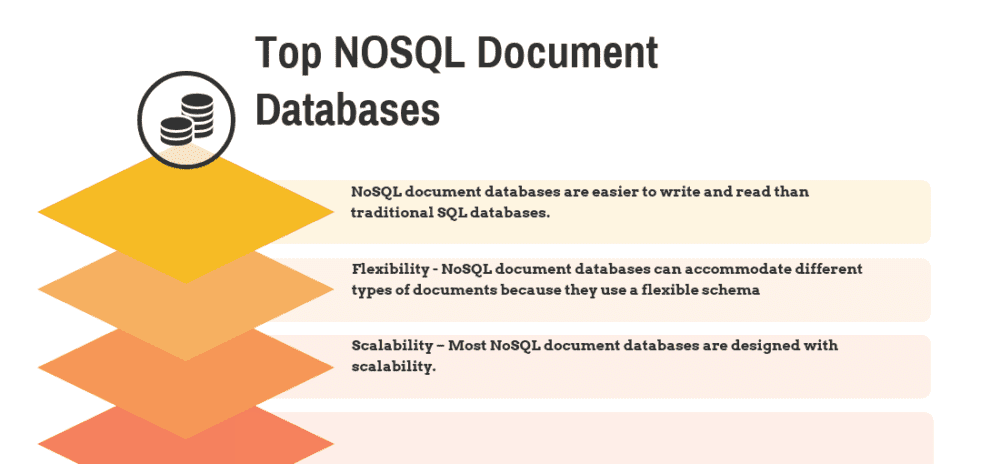
Businesses use different types of databases depending on the type of data they handle and their needs. Some data items have a uniform structure that allows them to fit into a table-based database. Businesses use relational databases to store this type of data. However, some data items do not have a uniform structure and thus cannot be stored in a table.
Some good examples in the business environment include business emails and articles. Although these documents have some structural elements such as titles, subjects and the names of authors, their structure is not rigid enough to be stored in an organized table structure. In this case, the data or document is termed as semi-structured or unstructured and relational databases are unlike to be effective. The best option is to utilize NoSQL document databases if your organization handles this type of data.
In Document-oriented database implementation, documents encapsulate and encode data in some standard formats or encodings. Encodings in use include XML, YAML, and JSON as well as binary forms like BSON, PDF and Microsoft Office documents such as MS Word, Excel.
In comparison to relational databases, the collections could be considered analogous to tables and documents analogous to records. Documents are addressed in the database via a unique key that represents that document. Other than using the simple key-document (or key-value) lookup to retrieve a document, the database also offers an API or query language that retrieves documents based on their contents.
What are the Top NoSQL document databases: MarkLogic, InterSystems Caché, MongoDB, OrientDB, Apache CouchDB, IBM Cloudant, CrateDB, Azure Cosmos DB, BaseX, Couchbase Server, eXist DB, IBM Informix are some of the Top NoSQL document databases.
What are NoSQL Document Databases?
NoSQL document databases are based on a model that does not require SQL and tables, unlike relational databases. Instead of using tables with the data types, columns, rows, schemas, and tabular relations used in relational databases, NoSQL databases use documents with data type descriptions and values.
Groups of data or documents are known as collections and serve the same purpose as tables in relational databases. Documents can have the same or different structures depending on what the user wants.
Users can add new objects without modifying the entire database. NoSQL databases use various encodings and formats to encode and encapsulate data. The common encodings include XML, JSON, YAML and binary forms such as PDF, BSON, MS Excel, and MS Word. Document-oriented databases allow users to store, retrieve, and manage data and documents. Organizations usually use NoSQL document databases to store semi-structured or unstructured data such as user data, messaging data, device data, images and videos.
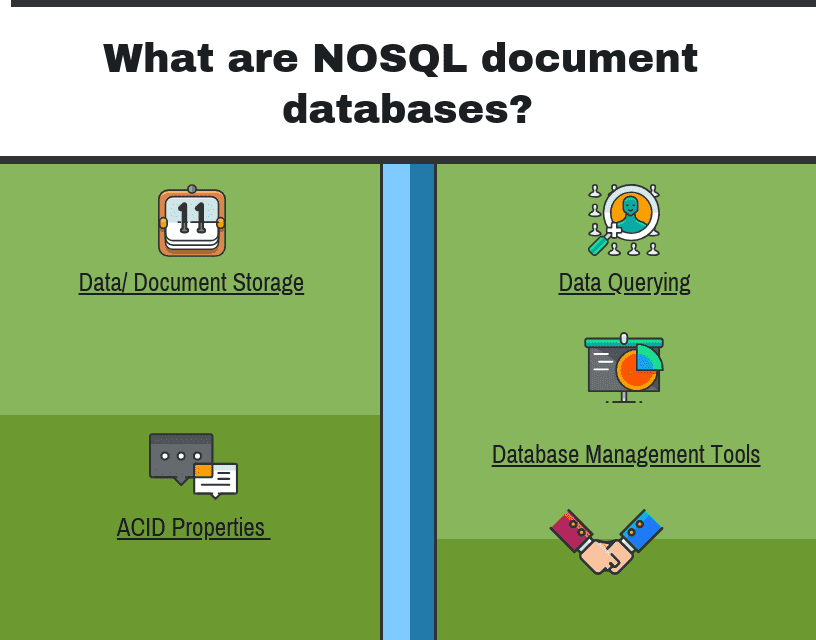
What are NOSQL document databases
Features include:
- Data/ Document Storage: NoSQL document databases allow organizations to store simple data without using complex SQL codes. Users can quickly store their data without compromising reliability.
- Data Querying: This is an important feature because database users need to retrieve data. Different NoSQL databases use different tools and techniques to query each document in the database and group the results in a dataset. Many NoSQL document databases use the mapping and reduction technique to query collections and generate results.
- Database Management Tools: These tools allow database users to insert, modify, and delete data from the database. Users perform these tasks without a predefined schema.
- ACID Properties: These properties are available in some NoSQL databases. The acronym ACID stands for:
- Atomicity – The database remains unchanged if a transaction is incomplete.
- Consistency – All changes adhere to the database design rules.
- Isolation – Sequential and parallel requests produce the same results.
- Durability – Requests remain even if there is an interruption.
The benefits of NoSQL Document database include:
- NoSQL document databases are easier to write and read than traditional SQL databases.
- Flexibility - NoSQL document databases can accommodate different types of documents because they use a flexible schema.
- Scalability – Most NoSQL document databases are designed with scalability. Users can increase the database without acquiring more powerful hardware.
Top NoSQL Document Databases
MarkLogic
MarkLogic, is a database platform that combines the agility of NoSQL with hardened enterprise features and advanced query, search, operational and transactional capabilities. MarkLogic supports server-side JavaScript and JSON, but also includes a robust set of enterprise features like semantics and bitemporal. Bitemporal allows businesses to minimize risk by looking at data as it was over the course of time. This is crucial for companies in strict regulatory environments, and also has broad applicability to any organization that needs to have a historical view of its data. MarkLogic 8 brings powerful new capabilities including massive enhancements for developers, bitemporal, semantics…
InterSystems Caché
InterSystems Caché is an advanced database management system and rapid application development environment. InterSystems Caché takes the complexity out of application design and deployment. Several high-availability options, including an elegant approach to mirroring, endow applications with robust reliability – but require less hardware than other vendors’ solutions. A flexible, adaptable security model with easy-to-use provisioning capabilities makes it simple to control access to resources. With the overall simplicity of its architecture, and powerful system management tools, Caché requires fewer database administrators (DBAs) than other databases. Within Caché, data can be modeled and stored as tables, objects, or multidimensional arrays (hierarchies).…
• Core processing language that compiles down to efficient runtime C code
• Built in object persistence layer which acts like an ORM
• A compare tool for comparing tables and/or SQL query results
• Unified Multi-Model Architecture
• Complete object and relational database management system
• Built in web gateway with large scale concurrency
Contact for Pricing
MongoDB
MongoDB is the next-generation database that lets its users create applications never before possible. It is designed for CIOs, architects, DBAs and Ops, Developers and Analysts. MongoDB stores data using a flexible document data model that is similar to JSON. Documents contain one or more fields, including arrays, binary data and sub-documents. Fields can vary from document to document. This flexibility allows development teams to evolve the data model rapidly as their application requirements change. When users need to lock down their data model, optional document validation enforces the rules they choose. MongoDB can make users heroes to the business,…
Single View
Internet of Things
Mobile
Real-Time Analytics
Personalization
Catalog
Content Management
Contact for Pricing
OrientDB
OrientDB features a 2nd generation distributed graph database that is unique, multi model graph database that offers flexibility for documents all in one product. It includes replication and sharding that can be used in most complex use cases and with an open source that is compatible with Apache 2 license. OrientDB works fast and capable of storing 220,000 records per second on most common hardware and supports schema less, full and mixed modes including SQL as one of the query language used. OrientDB provides safety in all confidential data that is present with the use of authentication, password and data-at-rest…
Apache CouchDB
Apache CouchDB is a scalable, fault-tolerant, and schema-free document-oriented database. It's used in large and small organizations for a variety of applications where a traditional SQL database isn't the best solution for the problem at hand. CouchDB is a terrific single-node database that works just like any other database behind an application server of your choice. CouchDB is also a clustered database that allows user to run a single logical database server on any number of servers or VMs. A CouchDB cluster improves on the single-node setup with higher capacity and high-availability without changing any APIs. CouchDB makes use of…
• ACID Semantics: Can handle a high volume of concurrent readers and writers without conflict
• Native support for BLOBs (Binary Large Objects)
• Futon, a browser based GUI and management tool
• Incremental and bi-directional replication
• Master-master setups with automatic conflict detection
• Map / Reduce Views and Indexes: The function takes a document and transforms it into a single value that it returns
Contact for Pricing
IBM Cloudant
IBM Cloudant is a NoSQL JSON document store that’s optimized for handling heavy workloads of concurrent reads and writes in the cloud; a workload that is typical of large, fast-growing web and mobile apps. Cloudant can be used as a fully-managed DBaaS running on IBM Cloud. Cloudant provides a seamless and cost-effective user experience online and offline, with IBM customers saving up to 95 percent in infrastructure and hosting costs. Available in all IBM Cloud regions and 55+ data centers across the world, Cloudant can easily be set up for disaster recovery between continents or scaling an app for a…
• Horizontal scaling architecture can handle millions of users and terabytes
• Mobile sync libraries enable devices to store and access data locally
• Advanced APIs: Integrated geospatial operations and search
• Access and identity management
• Data replication and export
• Redundant and durable data storage
• Standard - $1 / GB - month
CrateDB
CrateDB is a distributed SQL database built on top of a NoSQL foundation. It combines the familiarity of SQL with the scalability and data flexibility of NoSQL, enabling developers to: Use SQL to process any type of data, structured or unstructured; Perform SQL queries at real time speed, even JOINs and aggregates and scale simply. CrateDB’s distributed SQL query engine features columnar field caches, and a more modern query planner. These give CrateDB the unique ability to perform aggregations, JOINs, sub-selects, and ad-hoc queries at in-memory speed. CrateDB also integrates native, full-text search features, which enable users to store and…
• Dynamic schemas: Add columns anytime without slowing performance or downtime
• Geospatial queries: Store and query geographical information using the geo_point and geo_shape types
• SQL with integrated search for data and query versatility
• Container architecture and automatic data sharding for simple scaling
• Indexing optimizations enable fast, complex cybersecurity analyses
• Performance-monitoring tools
Contact for Pricing
Azure Cosmos DB
Azure Cosmos DB was built from the ground up with global distribution and horizontal scale at its core. Azure Cosmos DB provides native support for NoSQL choices, offers multiple well-defined consistency models, guarantees single-digit-millisecond latencies at the 99th percentile, and guarantees high availability with multi-homing capabilities and low latencies anywhere in the world. Only Azure Cosmos DB allows users to use key-value, graph, column-family, and document data in one service. Azure Cosmos DB automatically indexes all data and allows you to use favorite API including SQL, JavaScript, Gremlin, MongoDB… Azure Cosmos DB offers five well-defined consistency levels—strong, bounded staleness, consistent-prefix,…
• Automatic indexing allows for filtering against multiple different properties in real-time
• Social features: in-game chat messages, player guild memberships, challenges completed, high-score leader-boards, and social graphs
• Five different consistency levels: bounded staleness, strong, session, eventual, and consistent-prefix
• LINQ language integrated queries
• Geo-fencing ensures data governance and compliance restrictions
• Restoration of deleted data from backups
• SSD Storage - $ 0.25 GB / month
• Reserved Rus / sec -$0.008 / hour
BaseX
BaseX is a robust, high-performance XML database engine and a highly compliant XQuery 3.1 processor with full support of the W3C Update and Full Text extensions. It serves as excellent framework for building complex data-intensive web applications. BaseX is platform-independent and distributed under a permissive free software license. It comes with interactive user interfaces (desktop, web-based) that give users great insight into data. BaseX can import data in many formats including XML, JSON and CSV. Extraordinarily compact Text, Attribute, Full-Text and Path-Summary indexes accelerate the evaluation process by magnitudes. A fuzzy-match full-text option allows for approximate searches and retrieval. BaseX…
• Fast ad-hoc requests: Enter simple keywords to query the structure and contents of XML documents
• Highly interactive visualizations
• The embedded editor provides syntax highlighting, various shortcuts and shows detailed error feedback
• The Cryptography extension module enables users to encrypt and decrypt messages
• The Maps module offers an efficient functional implementation of maps
• Client-Server Communication
• Open source
Couchbase Server
Built on the most powerful NoSQL technology, Couchbase Server delivers unparalleled performance at scale, in any cloud. With features like memory-first architecture, geo-distributed deployments, and workload isolation, Couchbase Server excels at supporting mission-critical applications at scale while maintaining submillisecond latencies and 99.999% availability. Couchbase Server has a peer-to-peer topology and all the nodes are equal and communicate to each other on demand. Deliver consistent, fast experiences at scale, powered by memory-first architecture. High-performance indexes and index partitioning provides unparalleled query performance with complex joins, predicates, and aggregate evaluations. And, with end-to-end data compression, Couchbase significantly reduces the cost of network,…
• The Indexing Service efficiently maintains indexes for fast query execution
• Threshold-based monitoring and alerting
• Multidimensional scaling allows specific services to both scale up and scale out without sacrificing ease of administration
• IoT data management
• Cross datacenter replication (XDCR)
• Full-text search (FTS) and real-time analytics
Contact for Pricing
eXist DB
eXist-db (or eXist for short) is an open sourec software project for NoSQL databases built on XML technology. It is classified as both a NoSQL document-oriented database system and a native XML database (and it provides support for XML, JSON, HTML and Binary documents). Unlike most relational database management systems (RDBMS) and NoSQL databases, eXist-db provides XQuery and XSLT as its query and application programming languages. Being a complete solution, eXistdb tightly integrates with XForms for complex form development. Develop entire applications in XQuery using eXistdb's rich set of libraries. eXistdb applications are packaged as single archive files that are…
• Collections pane: Upload files from file system into the database
• Rich stack of libraries
• Syntax-coloring, code-completion and error-checking
• Integrated development environment (IDE)
• Application management with package-manager
• Different types of indexes (e.g. Lucene based full text index)
• Open source
IBM Informix
IBM Informix is a secure embeddable database, optimized for OLTP and Internet of Things (IoT) data. Informix has the unique ability to seamlessly integrate SQL, NoSQL/JSON, time series and spatial data. With four available editions, everyone from developers to global enterprises can benefit from its reliability, flexibility, ease of use and low total cost of ownership. The single Informix platform helps you power transactional workloads to enable analytics-driven insights at the speed of business. To support mission-critical environments, IBM Informix includes High Availability Data Replication (HADR), Remote Secondary Standby Database Servers and Shared Disk Secondary Server. The Flexible Grid feature…
• Flexible grid: Schedule upgrades or maintenance, scale capacity when and where needed
• Real-time analytics
• Dashboard to monitor server performance
• Informix Storage Manager support in the browser-based ISA
• Expanded Unicode support
• Configurable user authentication mechanisms using Pluggable Authentication Modules
Contact for Pricing
IBM Informix What are NoSQL Document Databases? NoSQL document databases are based on a model that does not require SQL and tables, unlike relational databases. Instead of using tables with the data types, columns, rows, schemas, and tabular relations used in relational databases, NoSQL databases use documents with data type descriptions and values. What are the Top NoSQL document databases? MarkLogic, InterSystems Caché, MongoDB, OrientDB, Apache CouchDB, IBM Cloudant, CrateDB, Azure Cosmos DB, BaseX, Couchbase Server, eXist DB, IBM Informix are some of the Top NoSQL document databases.













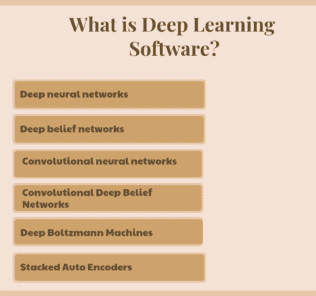
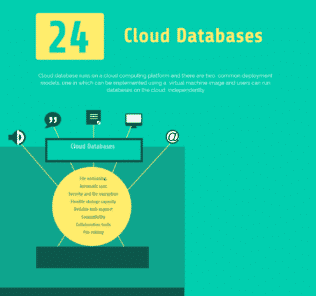
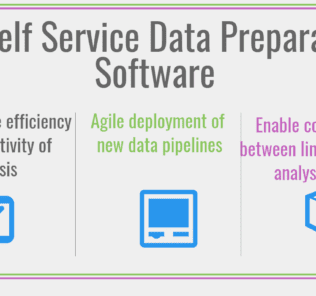

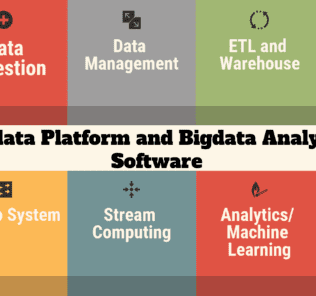
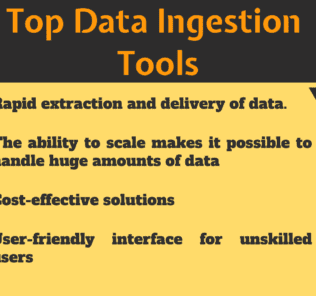




By clicking Sign In with Social Media, you agree to let PAT RESEARCH store, use and/or disclose your Social Media profile and email address in accordance with the PAT RESEARCH Privacy Policy and agree to the Terms of Use.